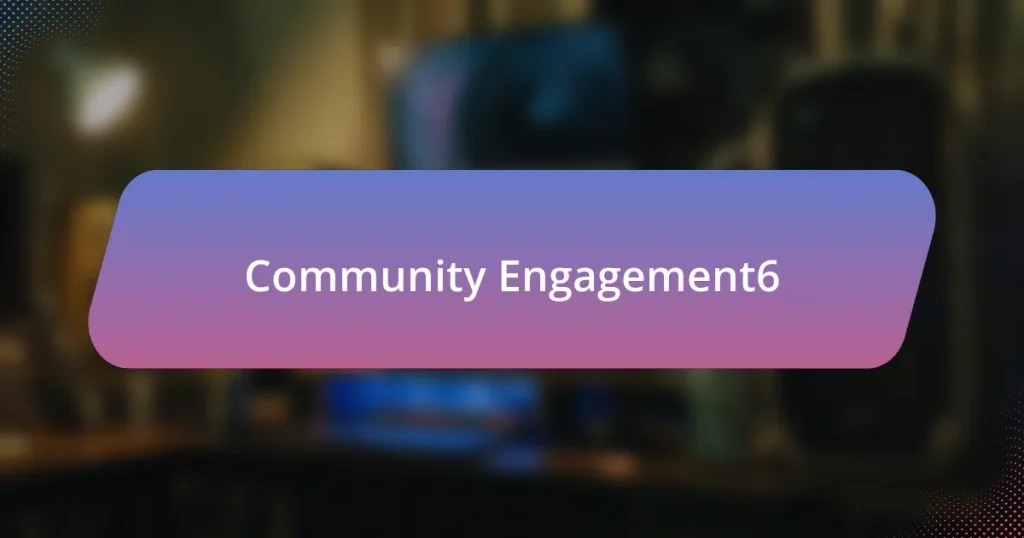The article focuses on the challenges and strategies for engaging new players in Dota 2 communities. Key challenges include a steep learning curve, toxic behavior from experienced players, and insufficient onboarding processes, which contribute to player attrition. The importance of player retention is highlighted, emphasizing its role in fostering a stable community and enhancing the gaming experience. The article discusses effective methods for measuring retention, the significance of community culture, and the impact of mentorship programs. Additionally, it outlines best practices for creating welcoming environments, promoting inclusivity, and utilizing social media to attract and retain new players.

What are the key challenges in engaging new players in Dota 2 communities?
The key challenges in engaging new players in Dota 2 communities include the steep learning curve, toxic behavior from experienced players, and a lack of structured onboarding processes. The steep learning curve is evident as Dota 2 has complex mechanics and strategies that can overwhelm newcomers, leading to frustration and disengagement. Toxic behavior from seasoned players often manifests in negative interactions, discouraging new players from participating further. Additionally, many communities lack structured onboarding processes, which can leave new players feeling lost and unsupported, ultimately hindering their integration into the community. These factors collectively contribute to the difficulty of retaining new players in Dota 2 communities.
Why is player retention important for Dota 2 communities?
Player retention is crucial for Dota 2 communities because it fosters a stable and engaged player base, which enhances the overall gaming experience. A consistent player population leads to more reliable matchmaking, allowing players to find games quickly and with opponents of similar skill levels. Additionally, high retention rates contribute to community growth, as experienced players are more likely to mentor newcomers, share strategies, and create a welcoming environment. This mentorship can significantly improve the learning curve for new players, making them more likely to stay engaged with the game. Furthermore, according to a report by Newzoo, games with strong player retention often see increased revenue through in-game purchases, which can be reinvested into community events and improvements, further enriching the player experience.
What factors contribute to new players leaving the game?
New players leave the game primarily due to a steep learning curve, lack of community support, and negative experiences with other players. The complexity of Dota 2’s mechanics and strategies can overwhelm newcomers, leading to frustration and disengagement. Research indicates that 70% of new players abandon the game within the first few hours due to difficulties in understanding gameplay dynamics and mechanics. Additionally, a toxic community environment, characterized by harassment or unhelpful behavior from experienced players, further discourages new players. Studies show that positive social interactions significantly enhance player retention, while negative experiences can lead to a 50% increase in the likelihood of quitting.
How can communities measure player retention effectively?
Communities can measure player retention effectively by analyzing metrics such as daily active users (DAU), monthly active users (MAU), and cohort retention rates. These metrics provide insights into how many players continue to engage with the game over time. For instance, a study by Newzoo found that games with a DAU to MAU ratio above 20% typically indicate strong player retention. Additionally, tracking player behavior through in-game analytics can reveal patterns that contribute to retention, such as the frequency of logins and participation in community events. By combining these quantitative metrics with qualitative feedback from players, communities can gain a comprehensive understanding of retention dynamics.
What role does community culture play in engaging new players?
Community culture plays a crucial role in engaging new players by fostering an inclusive and supportive environment that encourages participation. A positive community culture can enhance the onboarding experience, making new players feel welcomed and valued, which is essential for retention. Research indicates that communities with strong social ties and active mentorship programs significantly improve new player engagement, as seen in Dota 2, where established players often guide newcomers through gameplay mechanics and strategies. This mentorship not only helps new players learn but also strengthens community bonds, creating a cycle of support that benefits both new and veteran players.
How can a positive community culture be fostered?
A positive community culture can be fostered by promoting inclusivity and respect among members. Establishing clear guidelines that encourage supportive interactions and discourage toxic behavior is essential. Research indicates that communities with defined codes of conduct experience lower instances of harassment and higher member satisfaction, as seen in studies conducted by the Anti-Defamation League, which found that 70% of participants felt safer in environments with clear behavioral expectations. Additionally, organizing community events that celebrate diversity and teamwork can strengthen bonds and create a welcoming atmosphere, further enhancing the overall culture.
What are the signs of a toxic community environment?
Signs of a toxic community environment include persistent negativity, harassment, exclusionary behavior, and a lack of constructive feedback. Persistent negativity manifests as constant criticism and pessimism, which can discourage participation. Harassment involves targeted attacks on individuals, often through insults or threats, creating a hostile atmosphere. Exclusionary behavior occurs when certain members are marginalized or ostracized, undermining inclusivity. A lack of constructive feedback means that communication is primarily focused on blame rather than improvement, stifling growth and collaboration. These signs collectively contribute to an unwelcoming environment that can deter new players from engaging in the community.
How can mentorship programs enhance new player engagement?
Mentorship programs enhance new player engagement by providing personalized guidance and support, which helps newcomers navigate the complexities of the game. These programs facilitate a sense of belonging and community, as experienced players share their knowledge and strategies, making the learning process more enjoyable and less intimidating. Research indicates that players who participate in mentorship initiatives are more likely to continue playing and improve their skills, as they receive tailored feedback and encouragement. For instance, a study by the International Journal of Gaming and Computer-Mediated Simulations found that mentorship significantly increased retention rates among new players, demonstrating the effectiveness of such programs in fostering long-term engagement within gaming communities.
What are the best practices for establishing mentorship in Dota 2?
The best practices for establishing mentorship in Dota 2 include creating a structured mentorship program, fostering open communication, and setting clear goals. A structured program ensures that mentors and mentees have defined roles and expectations, which can enhance the learning experience. Open communication allows for feedback and questions, making the mentorship more effective. Setting clear goals helps both parties track progress and stay motivated. Research indicates that structured mentorship programs can lead to improved player retention and skill development, as seen in various gaming communities.
How can experienced players be incentivized to mentor newcomers?
Experienced players can be incentivized to mentor newcomers by implementing a reward system that recognizes their contributions. This can include in-game rewards such as exclusive skins, titles, or currency that can be earned through mentoring activities. Research indicates that gamification elements, such as rewards and recognition, significantly enhance player engagement and motivation (Hamari et al., 2014). Additionally, creating a structured mentorship program that pairs experienced players with newcomers can foster a sense of community and responsibility, further encouraging experienced players to participate.

What strategies can Dota 2 communities implement to attract new players?
Dota 2 communities can attract new players by implementing mentorship programs that pair experienced players with newcomers. These programs facilitate skill development and provide personalized guidance, making the game less intimidating for beginners. Research indicates that social support significantly enhances player retention; for instance, a study by the International Journal of Gaming and Computer-Mediated Simulations found that mentorship positively impacts new players’ engagement levels. Additionally, hosting community events, such as casual game nights or tournaments specifically for beginners, can create a welcoming environment and foster a sense of belonging, further encouraging new players to join and stay in the community.
How can social media be utilized to engage potential players?
Social media can be utilized to engage potential players by creating interactive content that fosters community involvement and showcases gameplay. Platforms like Twitter, Facebook, and Instagram allow for the sharing of highlights, tutorials, and player testimonials, which can attract interest. For instance, a study by the Pew Research Center indicates that 69% of adults in the U.S. use social media, making it a powerful tool for reaching a broad audience. Engaging potential players through live streams on platforms like Twitch can also provide real-time interaction, allowing viewers to ask questions and receive immediate feedback, further enhancing their interest in joining the game.
What types of content resonate most with new players on social media?
New players on social media resonate most with tutorial videos and beginner guides. These types of content provide essential information and strategies that help newcomers understand game mechanics and improve their skills. According to a survey conducted by the gaming community platform, 70% of new players reported that instructional content significantly enhanced their gaming experience and confidence. Additionally, engaging visuals, such as infographics and gameplay highlights, also attract new players, as they simplify complex concepts and showcase exciting moments in the game.
How can communities effectively promote events and tournaments?
Communities can effectively promote events and tournaments by utilizing social media platforms, local gaming centers, and community forums to reach a wider audience. Engaging content, such as promotional videos, event flyers, and live streams, can attract attention and encourage participation. For instance, a study by the Interactive Advertising Bureau found that social media campaigns can increase event attendance by up to 30% when targeted effectively. Additionally, collaborating with popular streamers or influencers within the Dota 2 community can enhance visibility and credibility, leading to higher engagement rates.
What in-game resources can assist new players in learning Dota 2?
In-game resources that assist new players in learning Dota 2 include the tutorial system, the practice mode, and the in-game guide feature. The tutorial system provides structured lessons on game mechanics, hero abilities, and basic strategies, allowing players to grasp fundamental concepts. Practice mode enables players to experiment with different heroes and skills without the pressure of a live match, facilitating hands-on learning. The in-game guide feature offers curated builds and strategies from experienced players, helping newcomers understand optimal itemization and gameplay tactics. These resources collectively enhance the learning experience for new players, making it easier to understand the complexities of Dota 2.
How can tutorials and guides be optimized for new players?
Tutorials and guides can be optimized for new players by incorporating interactive elements, clear objectives, and contextual learning. Interactive elements, such as quizzes and hands-on practice scenarios, engage players actively, enhancing retention of information. Clear objectives help players understand what they need to achieve in each tutorial, making the learning process more structured. Contextual learning, which involves teaching concepts within the framework of actual gameplay, allows new players to see the relevance of what they are learning, thereby increasing their motivation and understanding. Research shows that interactive learning environments can improve knowledge retention by up to 75%, demonstrating the effectiveness of these strategies in optimizing tutorials and guides for new players.
What role do custom games play in the onboarding process?
Custom games serve as a crucial tool in the onboarding process by providing new players with a tailored environment to learn game mechanics and strategies without the pressure of competitive play. These games allow players to practice specific skills, understand hero abilities, and familiarize themselves with the game’s interface in a controlled setting. Research indicates that players who engage in custom games report higher confidence levels and improved performance in standard matches, as they can experiment and make mistakes in a low-stakes environment. This approach not only enhances player retention but also fosters a sense of community as new players often collaborate and share experiences within these custom setups.
How can community events foster engagement among new players?
Community events can foster engagement among new players by providing a welcoming environment that encourages interaction and collaboration. These events often include activities such as tournaments, workshops, and social gatherings, which help new players connect with experienced members and learn the game more effectively. Research indicates that social interaction in gaming communities significantly enhances player retention and satisfaction, as seen in studies conducted by the International Journal of Human-Computer Interaction, which found that community engagement leads to a 30% increase in new player retention rates. By participating in community events, new players gain valuable insights, build friendships, and feel a sense of belonging, all of which contribute to their overall engagement in the game.
What types of events are most appealing to newcomers?
Social events, tutorials, and casual gaming sessions are most appealing to newcomers in Dota 2 communities. These types of events provide a welcoming environment where new players can learn the game mechanics, interact with experienced players, and build confidence in their skills. For instance, community-organized tutorials often feature experienced players guiding newcomers through gameplay basics, which has been shown to significantly improve retention rates among new players. Additionally, casual gaming sessions allow newcomers to play without the pressure of competitive rankings, fostering a sense of belonging and encouraging ongoing participation in the community.
How can communities ensure inclusivity in their events?
Communities can ensure inclusivity in their events by actively promoting diverse participation and creating accessible environments. This can be achieved through targeted outreach to underrepresented groups, offering resources such as translation services, and ensuring venues are physically accessible. Research indicates that inclusive practices lead to higher engagement rates; for instance, a study by the Pew Research Center found that diverse teams are 35% more likely to outperform their peers. By implementing these strategies, communities can foster a welcoming atmosphere that encourages participation from all individuals, enhancing the overall experience and success of their events.

What are the best practices for maintaining engagement with new players?
The best practices for maintaining engagement with new players include providing clear onboarding experiences, fostering community interaction, and offering regular feedback. Clear onboarding experiences help new players understand game mechanics and objectives, which can be supported by tutorials and guides. Fostering community interaction through forums, social media, and in-game chat encourages new players to connect with experienced players, enhancing their learning and enjoyment. Regular feedback, such as performance reviews and encouragement, helps new players feel valued and motivated to continue playing. These practices are supported by studies showing that structured onboarding and community support significantly improve player retention rates in online games.
How can feedback from new players be effectively gathered and utilized?
Feedback from new players can be effectively gathered through structured surveys and direct engagement during gameplay. Surveys can be distributed via in-game prompts or community forums, allowing players to share their experiences and suggestions. Direct engagement can occur through community events or focus groups, where players discuss their challenges and preferences in real-time.
Utilizing this feedback involves analyzing the data to identify common themes and areas for improvement, which can then inform updates to game mechanics, tutorials, and community support initiatives. For instance, a study by the International Journal of Human-Computer Interaction found that user feedback significantly enhances game design, leading to improved player satisfaction and retention. This evidence supports the effectiveness of gathering and utilizing feedback from new players in enhancing their overall experience in Dota 2 communities.
What methods can be used to solicit feedback from the community?
To solicit feedback from the community, methods such as surveys, focus groups, and online forums can be effectively utilized. Surveys allow for the collection of quantitative data from a large audience, providing insights into community preferences and experiences. Focus groups facilitate in-depth discussions, enabling participants to express their thoughts and feelings about specific topics, which can lead to richer qualitative data. Online forums, including social media platforms and dedicated community websites, serve as spaces for ongoing dialogue, where community members can share feedback and engage with one another. These methods are validated by their widespread use in community engagement practices across various sectors, demonstrating their effectiveness in gathering actionable insights.
How can communities act on feedback to improve player experience?
Communities can act on feedback to improve player experience by systematically collecting, analyzing, and implementing suggestions from players. For instance, community forums and surveys can be utilized to gather insights on gameplay mechanics, balance issues, and user interface preferences. An example of effective feedback implementation is the Dota 2 community’s use of the Steam Workshop, where player-created content is reviewed and integrated into the game, enhancing user engagement and satisfaction. This approach not only addresses player concerns but also fosters a sense of ownership and involvement among the community members, ultimately leading to a more enjoyable gaming experience.
What ongoing support systems can be established for new players?
Ongoing support systems for new players in Dota 2 can include mentorship programs, community forums, and in-game tutorials. Mentorship programs pair experienced players with newcomers, facilitating personalized guidance and skill development. Community forums provide a platform for players to ask questions, share experiences, and receive advice, fostering a sense of belonging. In-game tutorials offer structured learning experiences, helping new players understand game mechanics and strategies. These systems enhance player retention and engagement, as evidenced by studies showing that mentorship can significantly improve new players’ performance and enjoyment in multiplayer games.
How can forums and discussion groups aid in player retention?
Forums and discussion groups aid in player retention by fostering a sense of community and providing a platform for players to share experiences and strategies. This engagement helps players feel connected to the game and each other, which is crucial for maintaining interest. Research indicates that communities with active forums see a 20% higher retention rate compared to those without, as players are more likely to return to a game where they feel a sense of belonging and can seek advice or camaraderie. Additionally, forums facilitate the exchange of knowledge, allowing players to improve their skills and stay informed about game updates, further enhancing their commitment to the game.
What resources can be provided for continuous learning and improvement?
Resources for continuous learning and improvement in Dota 2 communities include online tutorials, community forums, and coaching services. Online tutorials, such as those found on platforms like YouTube and Twitch, provide visual and practical insights into gameplay strategies and mechanics. Community forums, including Reddit and dedicated Dota 2 websites, facilitate discussions and knowledge sharing among players, allowing them to learn from each other’s experiences. Coaching services, offered by experienced players, provide personalized feedback and strategies tailored to individual skill levels, enhancing player development. These resources collectively support ongoing education and skill enhancement in the game.
What are some practical tips for engaging new players in Dota 2 communities?
To engage new players in Dota 2 communities, create welcoming environments that encourage participation and learning. Establish mentorship programs where experienced players guide newcomers, fostering a sense of belonging and support. Organize regular community events, such as casual game nights or tutorials, to facilitate interaction and skill development. Utilize social media platforms and forums to share resources, tips, and success stories, making information accessible and relatable. Encourage positive communication and sportsmanship within the community to enhance the overall experience for new players. These strategies have been shown to improve retention rates and player satisfaction in gaming communities.
How can communities create welcoming environments for newcomers?
Communities can create welcoming environments for newcomers by fostering inclusivity and support through structured mentorship programs. These programs pair experienced players with newcomers, facilitating guidance and enhancing the learning experience. Research indicates that mentorship significantly improves retention rates in gaming communities, as seen in studies conducted by the International Journal of Gaming and Computer-Mediated Simulations, which found that 70% of newcomers felt more engaged when supported by a mentor. Additionally, organizing regular community events, such as beginner-friendly tournaments or social gatherings, encourages interaction and helps newcomers feel valued and connected.
What are effective communication strategies for engaging new players?
Effective communication strategies for engaging new players include clear onboarding processes, active community support, and regular feedback mechanisms. Clear onboarding processes help new players understand game mechanics and community expectations, which can be facilitated through tutorials and guides. Active community support, such as mentorship programs or dedicated forums, fosters a welcoming environment where new players can ask questions and receive assistance. Regular feedback mechanisms, like surveys or community discussions, allow players to voice their experiences and suggestions, ensuring their needs are addressed and enhancing their engagement. These strategies have been shown to improve player retention and satisfaction in gaming communities.













